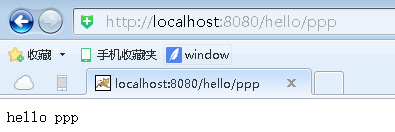以写的一个小的例子来记录第一次使用:
from flask import Flask, render_template import json # 实例化,可视为固定格式 app = Flask(__name__) # route()方法用于设定路由;类似spring路由配置 @app.route('/hello/bing') def hello_world(): nv = ["fengjie", "村头王大妈"] data = {} data['name'] = "Bing" data["justTryTry"] = "yes" data["girlsLike"] = nv return json.dumps(data, ensure_ascii=False) @app.route('/hello/<name>') def hello_world1(name): return "hello {}".format(name) @app.route('/hello/yyy') def hello_world2(): nv = ["fengjie", "村头王大妈"] data = {} data['name'] = "Bing" data["justTryTry"] = "yes" data["girlsLike"] = nv return render_template('bing.html', data=data) if __name__ == '__main__': host = "localhost" port = 8080 app.run(host, port) # 默认值:host=127.0.0.1, port=5000, debug=false app.run()
1、路由(使用 route() 装饰器来把函数绑定到 URL):
@app.route('/hello/bing')
2、传递json数据
@app.route('/hello/bing') def hello_world(): nv = ["fengjie", "村头王大妈"] data = {} data['name'] = "Bing" data["justTryTry"] = "yes" data["girlsLike"] = nv return json.dumps(data, ensure_ascii=False)
字典与json间的转换:
json.loads(json_str) json字符串转换成字典
json.dumps(dict) 字典转换成json字符串
为了传递过去的中文不出现乱码,在json.dumps增加参数(ensure_ascii=False)
json.dumps(data, ensure_ascii=False)

3、变量规则(通过把 URL 的一部分标记为 <variable_name> 就可以在 URL 中添加变量。标记的 部分会作为关键字参数传递给函数):
@app.route('/hello/<name>') def hello_world1(name): return "hello {}".format(name)
这时访问127.0.0.1:/8080/hello/xxx,则浏览器会返回内容hello xxx


4、渲染模板(在 Python 内部生成 HTML 不好玩,且相当笨拙。因为你必须自己负责 HTML 转义, 以确保应用的安全。因此, Flask 自动为你配置 Jinja2 模板引擎。)
@app.route('/hello/yyy') def hello_world2(): nv = ["fengjie", "村头王大妈"] data = {} data['name'] = "Bing" data["justTryTry"] = "yes" data["girlsLike"] = nv return render_template('bing.html', data=data)
<!DOCTYPE html> <html> <head> <meta charset="utf-8"> <title>女朋友</title> </head> <body> <table border = 1 align="center"> {% for key, value in data.items() %} <tr> <td>{{key}}</td> <td>{{value}}</td> </tr> {% endfor %} </table> </body> </html>
使用 render_template() 方法可以渲染模板,你只要提供模板名称和需要 作为参数传递给模板的变量就行了,本例传递 字典data到bing.html,在html中取出传递过来的data数据并显示。
Flask 会在 templates 文件夹(bing.html放在改文件夹下)内寻找模板。因此,如果你的应用是一个模块, 那么模板文件夹应该在模块旁边;如果是一个包,那么就应该在包里面
